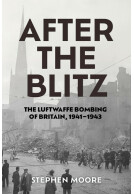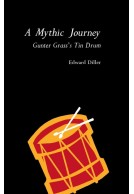Google Books previews are unavailable because you have chosen to turn off third party cookies for enhanced content. Visit our cookies page to review your cookie settings.
Lectures of the Air Corps Tactical School and American Strategic Bombing in World War II (Hardback)
Imprint: University Press of Kentucky
Series: Aviation & Air Power
Pages: 320
Illustrations: 24 b&w photos, 2 maps, 2 charts, 27 tables
ISBN: 9780813176789
Published: 12th April 2019
Script Academic & Professional
Series: Aviation & Air Power
Pages: 320
Illustrations: 24 b&w photos, 2 maps, 2 charts, 27 tables
ISBN: 9780813176789
Published: 12th April 2019
Script Academic & Professional
This book will be reprinted and your order will be released in due course.
You'll be £45.00 closer to your next £10.00 credit when you purchase Lectures of the Air Corps Tactical School and American Strategic Bombing in World War II. What's this?
+£4.99 UK Delivery or free UK delivery if order is over £40
(click here for international delivery rates)
Order within the next 11 hours, 11 minutes to get your order processed the next working day!
Need a currency converter? Check XE.com for live rates
(click here for international delivery rates)
Order within the next 11 hours, 11 minutes to get your order processed the next working day!
Need a currency converter? Check XE.com for live rates
Following the cataclysmic losses suffered in World War I, air power theorists in Europe advocated for long-range bombers to overfly the trenches and strike deep into the enemy's heartland. The bombing of cities was seen as a means to collapse the enemy's will to resist and bring the war to a quick end. In the United States, airmen called for an independent air force, but with the nation's return to isolationism, there was little appetite for an offensive air power doctrine. By the 1930s, however, a cadre of officers at the US Army Air Corps Tactical School (ACTS) had articulated an operational concept of high-altitude daylight precision bombing (HADPB) that would be the foundation for a uniquely American vision of strategic air attack.
In Lectures of the Air Corps Tactical School and American Strategic Bombing in World War II editor Phil Haun brings together nine ACTS lecture transcripts, which have been preserved in Air Force archives, exactly as delivered to the airmen destined to lead the US Army Air Forces in World War II. Presented is a distinctive American strategy of high-altitude daylight precision bombing as told through lectures given at the ACTS during the interwar period and how these airmen put the theory to the test. The book examines the Air Corps theory of HADPB as compared to the reality of combat in World War II by relying on recent, revisionist histories that have given scholars a deeper understanding of the impact of strategic bombing on Germany.
Other titles in the series...
Other titles in University Press of Kentucky...





















